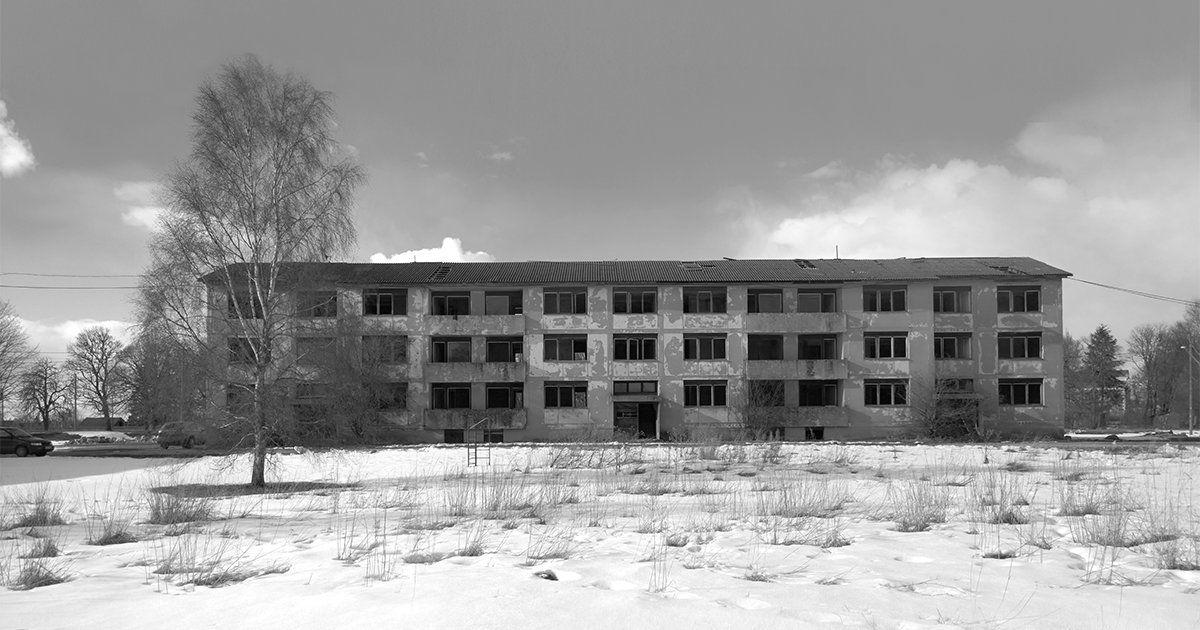
Taking the existing built environment as its starting point, this Master’s thesis is focusing on vacant buildings and investigating the possibility of reusing building materials in Estonia. On a global scale we need to rethink the use of resources and on a local scale find solutions for dealing with shrinking population.
An initial plan to de- and reconstruct building components in a decontextualised situation turned into more practical work. First part is a proposal for mapping vacant buildings as potentials for interim use or material reuse. Secondly, developing a framework for analysing vacant buildings with the potential for material reuse. The framework has been applied to four cases of vacant buildings in Estonia. The case studies address wide spread problems proposing site specific solutions based on the analysis.
A farm house ruin stays untouched after realising there are no incentives strong enough to intervene at the given time. A proposal for street inventory from old log houses addresses on a practical side the importance of the design stage in the reuse process and on the other side the story the reused materials can tell. The rubble from a Kolkhoz stable is used to construct an international railway project Rail Baltic. The elements of a vacant distressing Soviet era apartment block are used to create a public space on site forming a staircase and a landscape that can host various user groups and activities.
The thesis work is exceptional in its kind - instead of creating new original architecture we can see a thoughtful interest in the existing/abandoned environment. The main focus of the thesis is the circulation of unused spaces and materials.
The author demanded a responsible approach from herself going further from mapping and displacing the elements as a game of form. The decline in the population results in vast amounts of vacant buildings. At the same time different agreements demand more and more careful approach towards the environment, reuse as one of many possible solutions. As a result the landscape is not wiped out but the author demands that the architect’s role is to find new functions for the empty spaces and use for the materials. She states that the solutions can not stay generic but have to be site specific taking into consideration the local needs and possibilities. The author applied her method of analysis onto four realistic case studies in Estonia. During the process she stepped further from the theoretical approach and communicated with the owners, local communities and municipality representatives - the real decision makers.
As a tutor of the thesis I can confirm the author is an open-minded and responsible person whose wish is to direct architecture towards more ethical and sustainable path. Seeing potentials instead of problems she is capable of inspiring others around her. In this thesis work I see a potential for practical value for the society especially as the author has continued to work upon this topic.